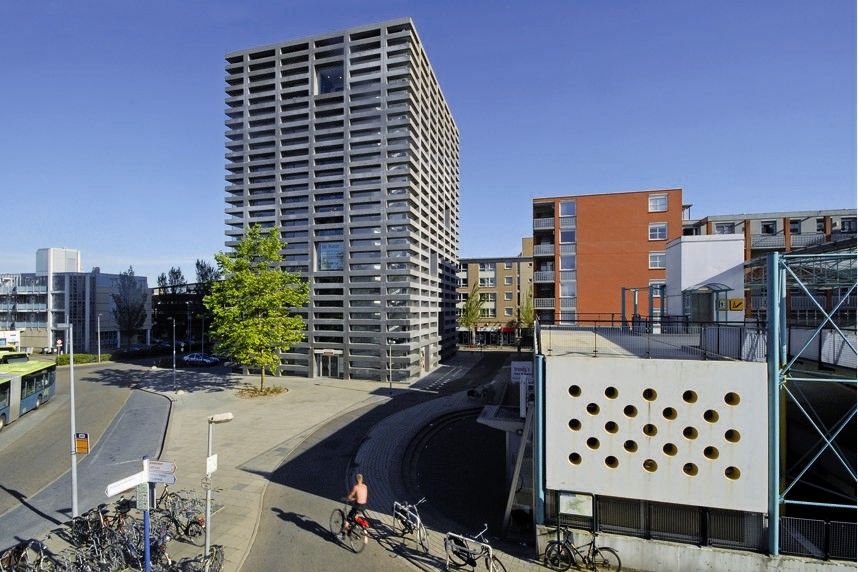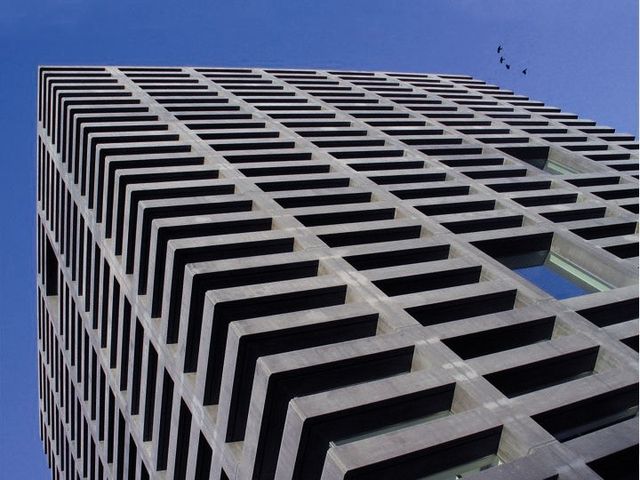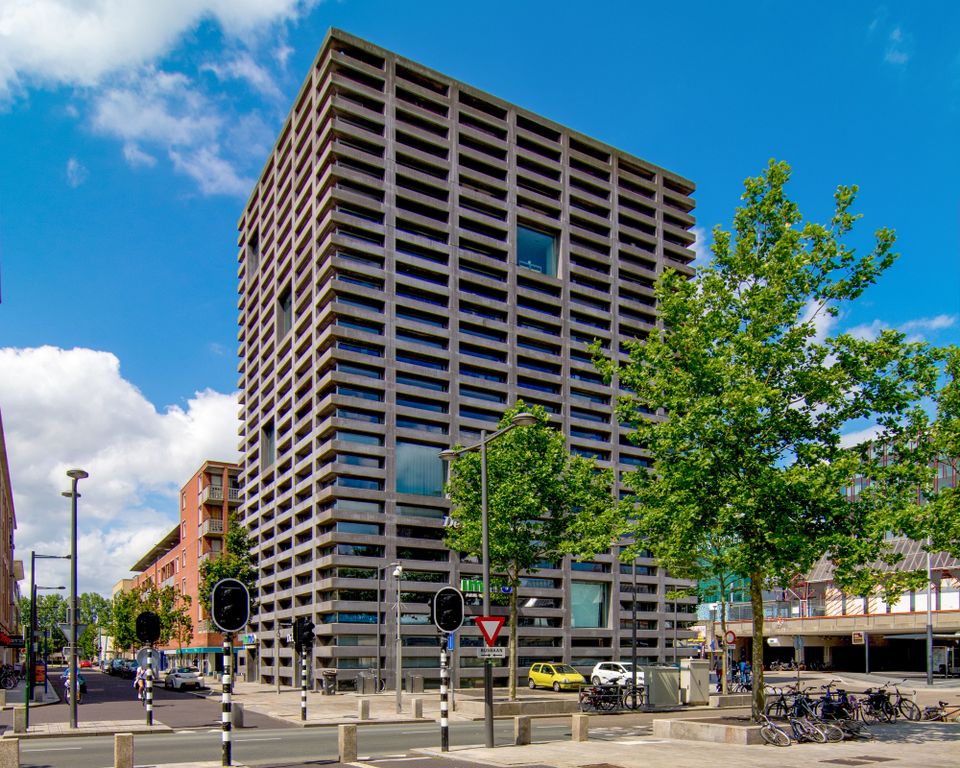
Tarra Tower
Tare is the difference between gross and net, that which is not usable. In this case, it is the structure, which is on the outside. In the case of the Tarra Tower, this is a load-bearing concrete harness of 60-cm-thick concrete, articulated by a tight grid of horizontal slots. The nine office floors are hidden behind it. This anthracite-coloured skeleton covers the façade from bottom to top, interrupted only here and there by openings three times the size of the fixed module.
The building's eye-catching material exudes...
Tare is the difference between gross and net, that which is not usable. In this case, it is the structure, which is on the outside. In the case of the Tarra Tower, this is a load-bearing concrete harness of 60-cm-thick concrete, articulated by a tight grid of horizontal slots. The nine office floors are hidden behind it. This anthracite-coloured skeleton covers the façade from bottom to top, interrupted only here and there by openings three times the size of the fixed module.
With its eye-catching material and rhythm, the building exudes both robustness and tranquillity. The expressive walls, with deep recesses, functionally create distance between the inner world of the offices located there and the busy street life. In this mega Jenga tower, the corners are 'free' due to the special supporting structure, which also makes the building look slender and slender. The freestanding building is located opposite the station, directly on the bus square, a cycle path and a street. An infrastructural node where every means of transport has its own place. Winy Maas was nominated for the Almere Architecture Prize in 2003 for the design of the Tarra Tower.




